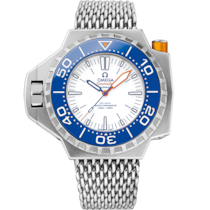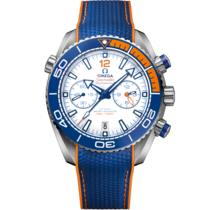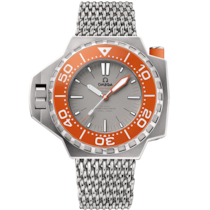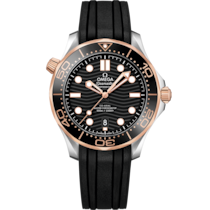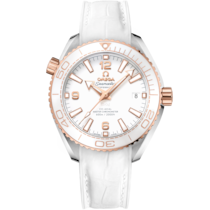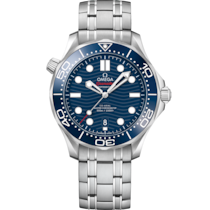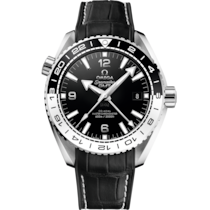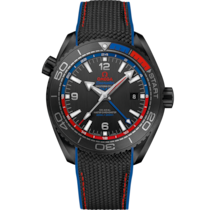It all starts with tiny granules, known in the business as feedstock. This fragile mix is pressed or injection-moulded into a rudimentary bezel shape and fired (sintered) at 1,400C/2,550F to shrink the blend’s volume, fuse the particles and create a ‘ring’ six times harder than steel that won’t scratch, discolour or fade.
A step closer to an Omega bezel, but still a little rough around the edges, this ring then undergoes a long process of refinement, which includes shaping and polishing with a diamond millstone, and laser engraving to create the indentations for a tachymeter or diving scale.
It’s a huge understatement to say that developing and producing coloured technical ceramics for the watchmaking industry is extremely challenging, especially for vivid colours. The key issue is to find the right feedstock composition, which can resist the sintered temperature and match the mechanical properties of ceramic, such as hardness and tenacity.
Extreme technology
Obtaining the desired colour requires a great deal of trial and effort. A watchmaker needs a good grasp of chemistry (and no doubt a philosophical approach to failure). Omega has found many ingenious solutions. To find the right red, for example, Omega used aluminium oxide [Al2O3] instead of zirconium oxide [ZrO2]. For the deep blue colour, Omega developed an additional heating treatment in order to obtain the right intensity.
Such developments have enabled Omega to secure several patents; and the brand’s commitment to adding original shades and colours to bezels and dials has also led to innovative materials, such as Liquidmetal™, introduced into the Seamaster Planet Ocean line in 2009. Liquidmetal™ can make a tachymeter or diving scale truly stand out. However, it does require off-the-scale tonnage to produce. A plate of Liquidmetal™, aligned with a ceramic disc, is heated and then pressed so firmly that the metal fills the holes in the laser engraved indentations. The excess metal is then removed, the surface of the bezel polished and the Liquidmetal™ scale brushed to perfection. This final sweep with a brushing tool affects only the numbers and scales, as the Liquidmetal™ is so much softer than the scratch-proof ceramic.

